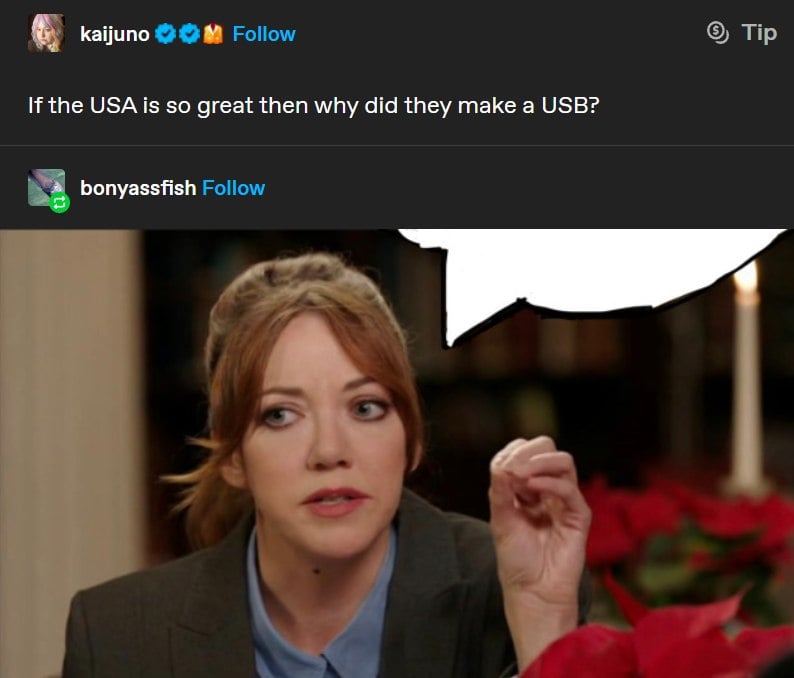this post was submitted on 20 Oct 2024
666 points (98.0% liked)
196
18171 readers
100 users here now
Be sure to follow the rule before you head out.
Rule: You must post before you leave.
Other rules
Behavior rules:
- No bigotry (transphobia, racism, etc…)
- No genocide denial
- No support for authoritarian behaviour (incl. Tankies)
- No namecalling
- Accounts from lemmygrad.ml, threads.net, or hexbear.net are held to higher standards
- Other things seen as cleary bad
Posting rules:
- No AI generated content (DALL-E etc…)
- No advertisements
- No gore / violence
- Mutual aid posts are not allowed
NSFW: NSFW content is permitted but it must be tagged and have content warnings. Anything that doesn't adhere to this will be removed. Content warnings should be added like: [penis], [explicit description of sex]. Non-sexualized breasts of any gender are not considered inappropriate and therefore do not need to be blurred/tagged.
If you have any questions, feel free to contact us on our matrix channel or email.
Other 196's:
founded 2 years ago
MODERATORS
you are viewing a single comment's thread
view the rest of the comments
view the rest of the comments

The story of the usb has it wild things. They knew that it had the problem of picking a wrong side but they had to make it cheap cause they feared manufacturers wouldn't use it. In fact was so cheap apple decided it to give it a go first. That cheap shit had to walk first so USB C can fly.
But why micro USB? That was later wasn't it?
Mini USB - 2000
Micro USB - 2007
USB-C - 2014
So any idea why they went with the horrible micro USB instead of a reversible C style?
Because its not just the connector, its the electronics. Usb c requires a chip to negotiate who is the host and whos the device. Usb-C thats completely ambiguous. But micro-B is always assumed is the device. But with power delivery becoming mainstream after micro B was drafted, the electronics can be all rolled into a singlw chip and finnally, reversible usb was cheap. To put in every device imaginable.
Hmm so the current C can be host or device, but really I'm not focused on that aspect. I'm focused on the reversible flip it over kind of thing - like USB A you flip over because you never get it right. You could have made a USB C style that always assumed is device.
Behold: Reversible USB-A

I mean they could. But it would only solve one side. I dont think the original drafters envision using usb as a charging platform but a data transfer between thousands of different devices and host devices. I dont think they intended for most portable devices to have one side basically permanently fixed.
For exampe for each mini and micro type B connected theres a mini and micro type A connector. But ive never seen one in the wild, but its suggestion the intention for the usb drafters.
I don't think we're talking about the same thing and I don't know where the confusion is.
Like when MicroUSB came out, I think charging was pretty standard. The cable can be a normal USB A to USB-something-that-is-reversible-like-USB-C-style, instead of the the USB micro.
not really, in 2007, USB wasn't even the main way to charge phones. most manufactures were using their proprietary connectors. I recall Nokia was using their barrel plug well until they sold to MS.
I don't mean micro was the standard way to charge, I mean that charging things was common. People wanted to charge things in 2007. And micro could be used to charge. Charging was a feature of micro.
We're really not talking the same language, I don't know where the confusion is, so I think I'm gonna bow out.
Because it was available for longer?
It takes a while to implement something. And it also took a while to basically standardize micro USB or mini USB as well. Remember when basically every phone manufacturer had their own connector? USB-C would for a while just break the norm again.
Really? I'm asking why they didn't design and use a reversible C style in 2007 instead of the micro USB. Afaik a reversible style is not dependent on tech development from 2007-2014,
Price, I imagine. Gotta make it cheap enough to get buy in. They were still competing with FireWire at that point.